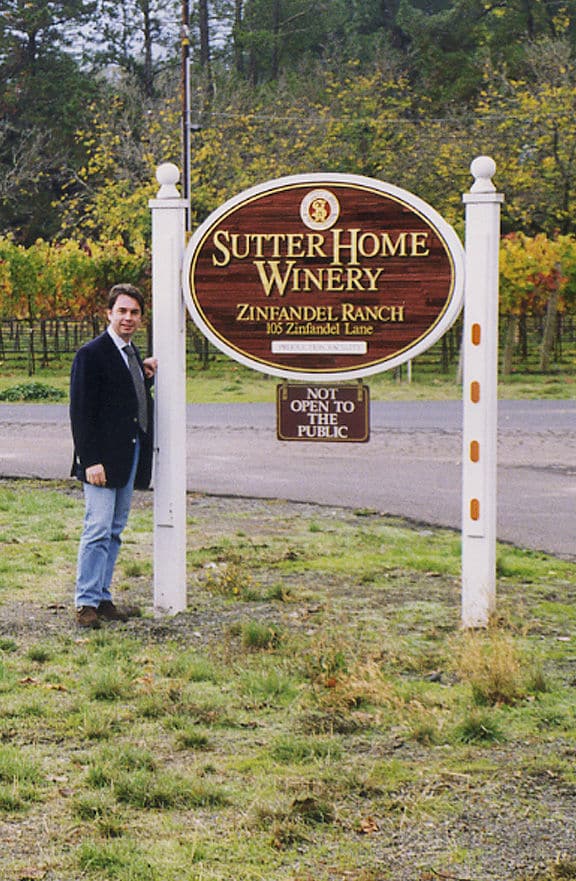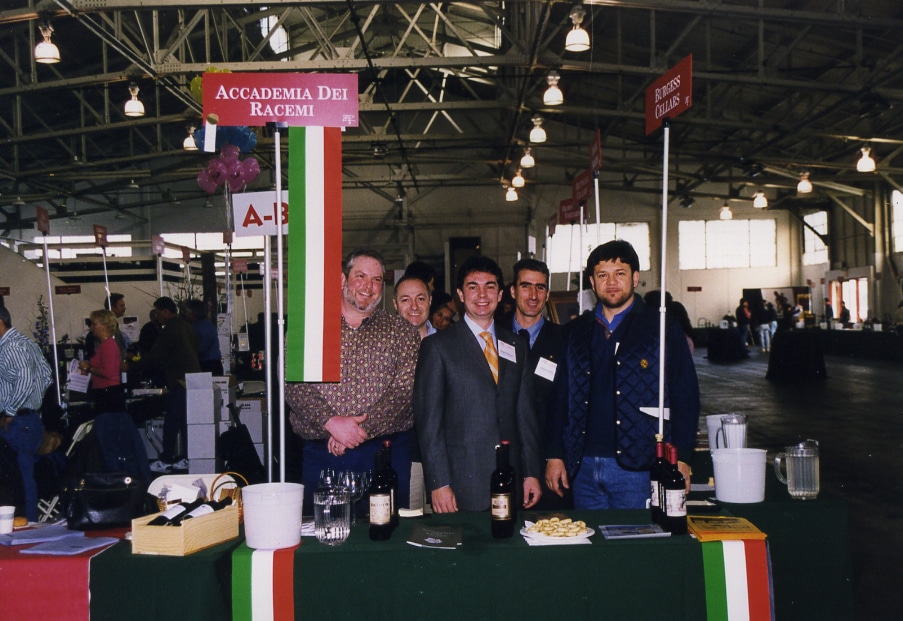The story of Primitivo and Zinfandel is made up of encounters. It begins in 1967, when Professor Austin Goheen of the Davis University (California), returning from a phytopathology conference in Germany, stopped in Bari to greet his colleague prof. Giovanni P. Martelli who, in turn, had been to Davis a few years earlier.
The two academics went for dinner in a restaurant in Bari and prof. Goheen noticed that the wine ordered by his friend Martelli – a Primitivo – was incredibly similar to the Zinfandel from his land. Since that evening the destinies of the two vines began to cross, taking up the work of Italian and American researchers and scientists who gradually debated the probable identity of the two grapes.
In the 90s Californian
Zinfandel was already well known and appreciated in the American market, also because it was considered to be the “only original grape variety” not coming from Europe. The Primitivo di Manduria instead, with our Felline, had just broken through the wall of widespread prejudice on Puglia and its wines, until then exclusively used in bulk trade.
In addition to the Accademia dei Racemi zoning project, we also wanted to intervene in the research and historical reconstruction of the relationship with the American Zinfandel. What intrigued us above all was the unknown origin of the name “Zinfandel”, attributed by historians to an incorrect classification of a vine originating in Hungary called Zierfahnler. Supporting the Apulian or rather “Mandurian” origin of the Zinfandel, we found intriguing and very likely the hypothesis that its name could derive from the famous “Sinfarosa” city quarter, well known among local farmers for the quality of its Primitivo.
So it was that on one of our many trips to California, we got hold of scions from one of the most prestigious Zinfandel vineyards in America: Ridge’s Geyserville. We took them to Manduria and over grafted exactly in the Sinfarosa area next to other Primitivo vineyards to observe their similarities and differences. Meanwhile Professor Carole Meredith of the Davis University had definitively finalized matters by establishing, based on her genetic research of the two vines’ DNA, that Zinfandel and Primitivo are identical.
Our Zinfandel Sinfarosa, repeatedly awarded the Tre Bicchieri by Gambero Rosso, is the only non-American wine admitted to the ZAP (Zinfandel Advocates and Producers) Gran Festival held every year in San Francisco.




Felline Soc. Agricola a.r.l.
S.Comunale Santo Stasi I, 42
74024 Manduria (Ta) Italia
P.I. – C.F. 02939250730
Copyright 2023 – Privacy and Cookie Policy – Comunic@ndo







Attraverso la collaborazione con viticultori di territori diversi della regione ed enologi con esperienze nelle vinificazioni di qualità, vengono “offerti” alla conoscenza di giornalisti e importatori le nuove produzioni da uve fino ad allora del tutto trascurate o sconosciute:
Ottavianello, Susumaniello (recuperato da Gregory con l’azienda Torre Guaceto), Fiano Minutolo (azienda Sammartino), oltre a nuove versioni di Negroamaro e Malvasia Nera (azienda Castel di Salve), Moscato Reale di Trani (azienda De Filippo), uva di Troia e Montepulciano (azienda Paolo Petrilli) e ovviamente la zonazione di Primitivo (terra rossa, bianca, nera e sabbia).
L’Accademia dei Racemi annovera tra le consulenze, oltre a Roberto Cipresso e Fabrizio Perrucci, Enzo Moiso, Luca Boaretti. Tuttora alcune aziende create dall’Accademia dei Racemi sono presenti con onore sul mercato.
Oltre a far parlare di sé per i propri vini, l’Accademia dei Racemi diventa un riferimento unico nel panorama regionale per la ricerca, lo studio, la sperimentazione dei vitigni autoctoni.
Per gli esami condotti sulle relazioni tra Primitivo e Zinfandel, la storia e le sperimentazioni, nonché la richiesta di aggiornamento dell’elenco dei sinonimi regolamentato dalla Unione Europea, Gregory Perrucci viene ammesso come unico “membro non americano” nella prestigiosa associazione californiana denominata Zap (Zinfandel Advocates and Producers).
Alcuni anni dopo, precisamente nel giugno 2002 dopo la decretazione scientifica dell’identità tra Zinfandel e Primitivo, nonché tra essi e il croato Crnjelak Kastelansky, è relatore al primo Convegno Internazionale sullo Zinfandel. Tiene una relazione sulle origini del primitivo e i suoi rapporti con lo Zagarese (scomparso) in una sessione congiunta con Doug Beckett (enologo californiano) e il mitico Miljenko Grgich, icona dell’enologia americana per avere prodotto due dei vini che nel concorso mondiale di Parigi del 1976 alla cieca sbaragliarono i vini francesi.